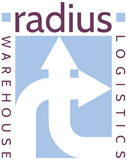The shipping industry is one of the older forms of the cargo movement in the world. With a history dating back as far as the 14th century, we have long used the wide expanses of water around us to ensure that goods and essentials are readily available. In modern years, the advancement of technology has had a significant impact on the shipping industry. Helping to improve safety, provide up-to-date information and improve the speed of transit, there are a host of advancements that see the shipping industry maintain its importance within this field. In today’s blog, we’ll take a look at how technology is being used to digitalise the shipping industry.
The Emergence of Autonomous Ships
There are estimates to suggest that we can expect autonomous vehicles on the roads within the next 10-20 years. However, leading names such as Rolls Royce, have been in discussions about the possibility of autonomous boats. While there is no indication that this will reduce the need for the crew just yet, the emergence of autonomous ships could see significant benefits for safety and the reduction of human error. The idea is that a collective of information from sensors, control algorithms, and communication connectivity will merge together to help a ship monitor its own surroundings and the decisions it needs to make.
AI To Optimise Business Efficiency
Artificial Intelligence (AI) has become a common theme of conversation in recent years. It is expected that this ever-evolving technology will become commonplace for areas such as voyage planning and vessel maintenance. Using this self-awareness technology is intended to improve the quality of decision-making within the shipping industry, creating technology that improves perception and situational awareness.
Industrial IoT Within the Shipping Industry
IoT (Internet of Things) is a method of collecting data and using this to produce relevant information. Within the shipping industry, it is used to help with tracking in real-time and monitoring the cargo levels within different containers. For clients, this gives a heightened understanding of the conditions their goods are being transported in and the ability to dictate these as a result. Its use aims to reduce human error and reduce the need for manual tracking.
The shipping industry is constantly growing with the number of goods being transported via sea increasing by 2.7% to 11 billion tons in 2018. Adapting to evolving technology and utilising the new tools that are becoming available is one of the ways that this archaic form of freight movement can continue to meet needs.
Radius Warehouse and Logistic Services believes in utilising technology to the advantage of our clients. Request a quote or contact us for more information about our services here today.



